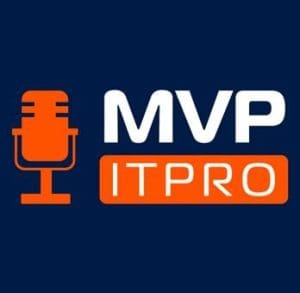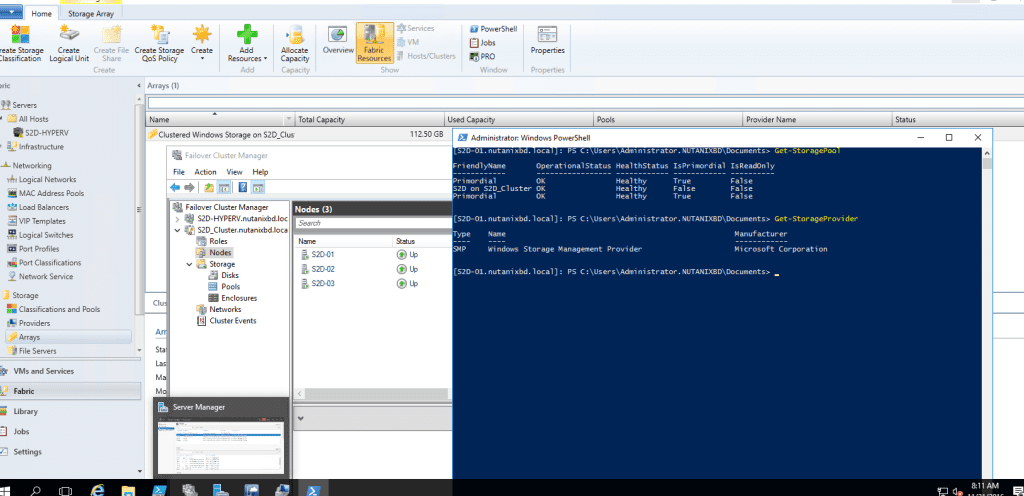
For enterprises that are getting into cloud computing for the first time, or jumping in deeper after getting some cloud experience, the Microsoft Azure hybrid cloud can be a great fit to bring it all together. Continue reading


For enterprises that are getting into cloud computing for the first time, or jumping in deeper after getting some cloud experience, the Microsoft Azure hybrid cloud can be a great fit to bring it all together. Continue reading
This is the start of an awesome podcast series called MVPITPro. I am excited to be working with MVP Andy Syewicze from Altaro Software to produce this series of podcasts for all the IT Pros out there. Episode one is with my fellow MVP and friend Symon Perriman of FanWide, and 5nine Software before that. 🙂 So sit back and enjoy the ride!!! And maybe you learn a little bit about being an MVP!!

Enjoy, until next time, Rob Corradini, MVP, Cloud & Datacenter
 To realize the full benefit of any cloud computing platform—Azure, AWS, or any other—you need to implement best practices related to security and compliance. All too often, data center security takes a backseat to data center design, which puts businesses at a disadvantage when it comes to keeping up with data regulations and preventing data breaches. A 2017 report from Intel Security notes that only 23% of organizations completely trust public clouds to keep their data secure. But with the right resources, it is possible for your organization to achieve both compliance and security in the cloud—without high costs, special expertise, or performance setbacks. Continue reading
To realize the full benefit of any cloud computing platform—Azure, AWS, or any other—you need to implement best practices related to security and compliance. All too often, data center security takes a backseat to data center design, which puts businesses at a disadvantage when it comes to keeping up with data regulations and preventing data breaches. A 2017 report from Intel Security notes that only 23% of organizations completely trust public clouds to keep their data secure. But with the right resources, it is possible for your organization to achieve both compliance and security in the cloud—without high costs, special expertise, or performance setbacks. Continue reading
This was the first year I have not attended Microsoft Ignite, due to unforeseen circumstances. But this didn’t stop me from covering Ignite 2017. So here we go…

Ignite 2017 this year has about 25k attendees. During the same time as Ignite, they are also running Microsoft Envision. This is more focused to business leaders across industries. Its main focus is to have Business Leaders understand and manage their organizations in the Digital Age.


Expanding Microsoft 365
Intelligent personalized search power by Microsoft Graph
Intelligent Communications vision
Advances in Intelligent Security
New Microsoft Dynamics 365 AI Solutions
Modular apps for Dynamics 365
Deeper integration for PowerApps and Microsoft Flow + Office 365 and Dynamics 365
Apps and Infra/Data and AI
Delivering true hybrid consistency
Empowering customer to optimize costs
Any data, any place
One convenient workbench for data scientists and AI developers
Build intelligent apps at global scale
Performance and Scale for mission-critical analytic apps
To empower nonprofits, Microsoft Philanthropies will:
To get more detailed information about these announcements, please see links below or check out the Ignite2017 Site.
Official Microsoft Blog
Office Blogs
EMS Blog
Dynamics Blog
Azure Blog
Hybrid Cloud Blog
Data Platform Blogs

Until next time, Rob.
Applications
Microsoft SQL Server product group announced that SQL Server, either virtual or bare metal, is fully supported on Storage Spaces Direct. The Exchange Team did not have a clear endorsement for Exchange on S2D and clearly still prefers that Exchange is deployed on physical servers with local JBODs using Exchange Database Availability Groups or that customers simply move to O365.

Good day everyone. It been a few weeks, like busy with work and such. Anyways, this post will go into how Management & Operations are done in S2D. Now, my biggest pet peeve is complex GUI management and yet again, Microsoft doesn’t disappoint. It still a number of steps in different interfaces to bring up S2D, Check out Aidan Finns blog post on disaggregated management from last year. It still rings true to this day with the release of 2016. It shouldn’t be this complex IMO 🙁 That being said, let move to the details.
 Continue reading
Continue reading
 Fault Tolerance…What does it mean? Let me break it down simply. Pictured above is just a bad design, not fault tolerance. This is not really what fault tolerance means. Having two or more of something is one factor, but how it’s implanted is just as important. Fault Tolerance incorporates two very important principles, High availability and Redundancy.
Fault Tolerance…What does it mean? Let me break it down simply. Pictured above is just a bad design, not fault tolerance. This is not really what fault tolerance means. Having two or more of something is one factor, but how it’s implanted is just as important. Fault Tolerance incorporates two very important principles, High availability and Redundancy.
Now if we had a few toilets side by side and kept only 1 open and the other 2 on standby. Also, if it could move the user automatically to another toilet during a failure, then it technically it would be fault tolerant. Anyways, let’s move on from toilets to the real world. 🙂
Here’s where we dive in and get dirty…but I promise by the end of my series, you will smiling like my friend here. I am planning a surprise with special guest bloggers. Stayed Tuned. Now one to the show…..

Like S2D, the ReFS file system actually isn’t new either, they have been working on it for several releases now also. In Windows Server 2016, it finally drops the tech preview label and is now ready for production. And there is a lot of benefits… like volume creation doesn’t have to zero out the volume for 10 minutes like NTFS. It’s just a metadata operation that is effectively instantaneous now, I’m just going to focus on the couple of benefits that ReFS has for S2D.
For those not familiar Erasure coding (EC) and to prepare you for the next part, EC is a method of data protection in which data is broken into fragments, expanded and encoded with redundant data pieces and stored across a set of different locations.
The original goal of EC was to enable data that becomes corrupted at some point in the storage process to be reconstructed by using information about the data that’s stored elsewhere. Erasure codes are great, because of their ability to reduce the time and overhead required to reconstruct data. The drawback of erasure coding is that it can be more CPU-intensive, and that can translate into increased latency.
Now all that being said, classic erasure codes were designed and optimized more for communication, not for storage. Naively applying classic erasure codes in storage is okay, but is missing enormous efficiencies. Microsoft has developed their own erasure codes optimized for storage called Local Reconstruction Codes (LRC). I will cover this brieifly further down in the post.
Now back on to S2D…For data protection, S2D uses either 3-way mirroring or distributed parity with EC. Mirroring gives you great write performance, but only 33% data efficiency. EC gives you good data efficiency, but random write performance isn’t great for hot data. ReFS supports the ability to combine different disk tiers using different parity schemes in the same vDisk. This allows S2D to do real-time data tiering by writing new data to the mirror tier and then automatically rotating cold data out to the parity tier and applying the erasure code on data rotation.
It is important to note that ReFS does not currently support Deduplication. There was a question on this in every session and MSFT says that this is all the ReFS is currently focused on. So we’ll expect to see it land in ReFSv3. For now, customers can get dedupe with S2D by using NTFS. 🙁

 Note if you only have two types of storage then the highest performing is used for the cache while the other type will be divided between performance and capacity with the different resiliency option (mirror vs parity) providing the performance/capacity difference between the tiers. If you only have one type of storage then the cache is disabled and the disks divided between performance and capacity like the previously mentioned case.
Note if you only have two types of storage then the highest performing is used for the cache while the other type will be divided between performance and capacity with the different resiliency option (mirror vs parity) providing the performance/capacity difference between the tiers. If you only have one type of storage then the cache is disabled and the disks divided between performance and capacity like the previously mentioned case.
For non-Storage Spaces Direct only two tiers, of storage are supported like Windows Server 2012 R2, i.e. SSD and HDD, there is no cache. If you had NVMe storage that could be the “hot” tier while the rest of storage (SSD, HDD) could be the “cold” tier (you name the tiers whatever you want) but you cannot use three tiers.


 During Ignite 2016, Microsoft took many shots at VMware. Microsoft said that there’s a right way and a wrong way to do erasure coding. “When you do it the wrong way, performance sucks and you have to limit it to all-flash configurations.”
During Ignite 2016, Microsoft took many shots at VMware. Microsoft said that there’s a right way and a wrong way to do erasure coding. “When you do it the wrong way, performance sucks and you have to limit it to all-flash configurations.”
Microsoft research is using a new technique called “Local Reconstruction Codes”. It uses smaller groups within the vDisk that allows them to recover from failures much faster by not having to reconstruct data from across the entire pool. This combined with multi-tier volumes gives S2D good performance, even on hybrid systems. Sounds like a technology that I seen before. Hmmm..I wonder where……. 😉
 Ok, that’s all for now. next up, Fault Tolerance and Multisite Replication with S2D….
Ok, that’s all for now. next up, Fault Tolerance and Multisite Replication with S2D….
Until Next time, Rob….